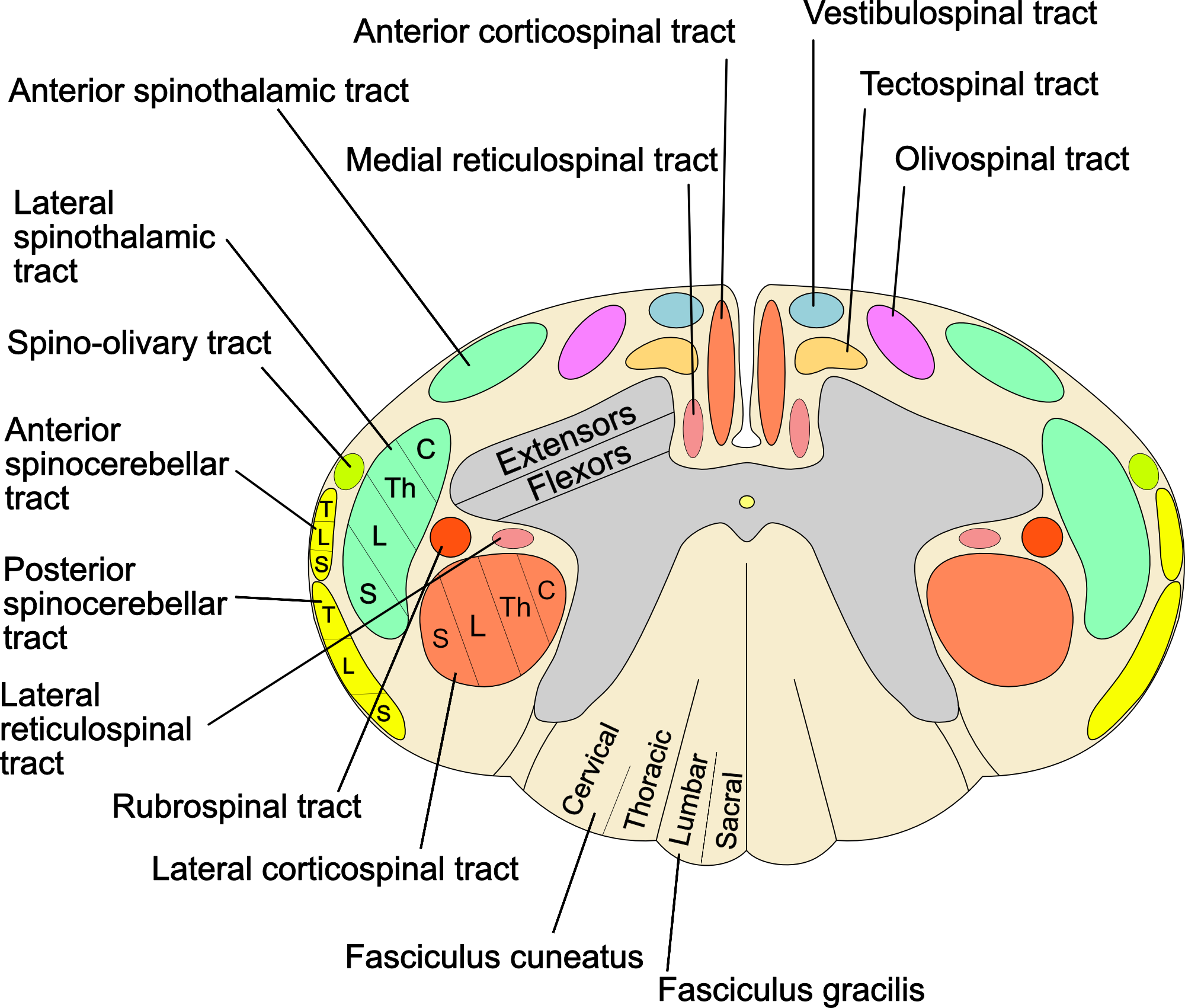Spinal cord tracts

1. Ascending tracts
Fasciculus gracilis
- Carries nerve fibers of the dorsal column-medial lemniscus pathway from the lower limbs and trunk.
- Transmits conscious proprioception, vibration and fine touch sensations.
Fasciculus cuneatus
- Carries nerve fibers of the dorsal column-medial lemniscus pathway from the upper limbs and trunk.
- Transmits proprioception, vibration and fine touch sensations.
Anterior spinothalamic tract
- Transmits pressure and crude touch sensations from tactile corpuscles and hair follicles.
Lateral spinothalamic tract
- Transmits pain and temperature sensations.
Anterior and posterior spinocerebellar tracts
- Transmit unconscious proprioceptive signals from muscle spindles and tendon receptors.
- Projection fibers in the anterior tract transmit to both ipsilateral and contralateral cerebellum through the superior cerebellar peduncle.
- Projection fibers in the posterior tract transmit strictly to ipsilateral cerebellum through the inferior cerebellar peduncle.
Spino-olivary tract
- Carries fibers that transmit unconscious proprioceptive signals from contralateral muscle spindles and tendons as well as cutaneous signals to inferior olivary nucleus.
- It is involved in balance and control of movements of the extremities and trunk.
2. Descending tracts
I. Pyramidal tracts
Anterior corticospinal tract
- Transmits pyramidal fibers that control the axial muscles.
- Composed of corticospinal fibers that do not decussate in the pyramids (\~20%).
- Most fibers cross at the segmental level to synapse in the contralateral anterior horn.
Lateral corticospinal tract
- Transmits pyramidal fibers that control the muscles of the extremities.
- Composed of corticispinal fibers that decussate in the pyramids (\~80%).
II. Extrapyramidal tracts
Tectospinal tract
- Transmits fibers originating from the superior colliculus in the midbrain tectum to the cervical spinal cord.
- Mediates motor impulses to contralateral musculature.
- Responsible for reflex postural movements of the head in response to visual and auditory stimuli.
Medial (pontine) and Lateral (medullary) reticulospinal tracts
- The MRT mediates motor signals to extensor (antigravity) muscles.
- The LRT is responsible for automatic breathing and mediates inhibitory signals to axial extensor muscles.
- The reticulospinal tracts influence muscle tone, coordinate postural and locomotive activities, mediate autonomic functions and have pain modulating role.
Rubrospinal tract
- Originates in the red nucleus and its fibers cross over in the midbrain.
- Facilitates flexion and regulates flexor tone.
- Mediates voluntary movement in large muscles as well as fine motor control, mainly in the upper extremity.
Olivospinal tract
- Its existence is disputed.
- Originally thought to carry fibers descending from inferior olivary complex to cervical spinal cord.